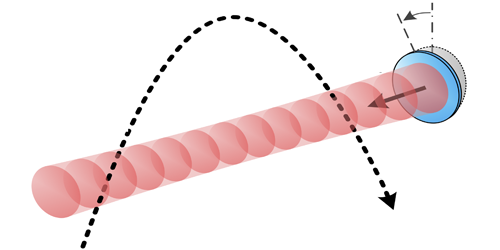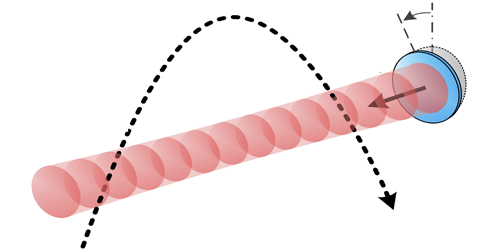Atom Interferometers at Full Tilt
Atom interferometers allow sensitive measurements based on interference effects between atoms so cold that they behave as waves. They have been used, for instance, to measure the fine-structure constant and to build rotation sensors. Experiments have now demonstrated that atom interferometers can act as ultrasensitive tiltmeters—devices that measure the tilt of a surface relative to the vertical direction, as determined by the force of gravity. The scheme achieves a sensitivity sufficient to observe Earth’s deformations due to tides.
The device designed by Zhong-Kun Hu and colleagues at the Huazhong University of Science and Technology, China, is based on an established atom-interferometry configuration that is applied, for the first time, to measuring tilt. First, a cloud of a million ultracold rubidium atoms is launched upward along a parabolic trajectory. Shortly after the launch, pulses from two counterpropagating lasers split the cloud into two atomic wave packets—one made of atoms in their ground state and the other of atoms excited by the lasers. Then, near the end of the atoms’ journey, more pulses from the same beams recombine the two groups of atoms. From the fringes resulting from quantum interference between the two wave packets, the researchers derive the angle between the laser beams and the force of gravity, which is the tilt.
The team showed that the sensitivity of the device was nearly 1000 times better than that of the best previously reported tiltmeter based on atomic interferometry. In experiments conducted continuously over 1.5 days in an underground lab, the researchers demonstrated the potential for geophysical uses by observing the tide-induced daily tilt of Earth’s surface.
This research is published in Physical Review A.
–Matteo Rini
Matteo Rini is the Deputy Editor of Physics.





